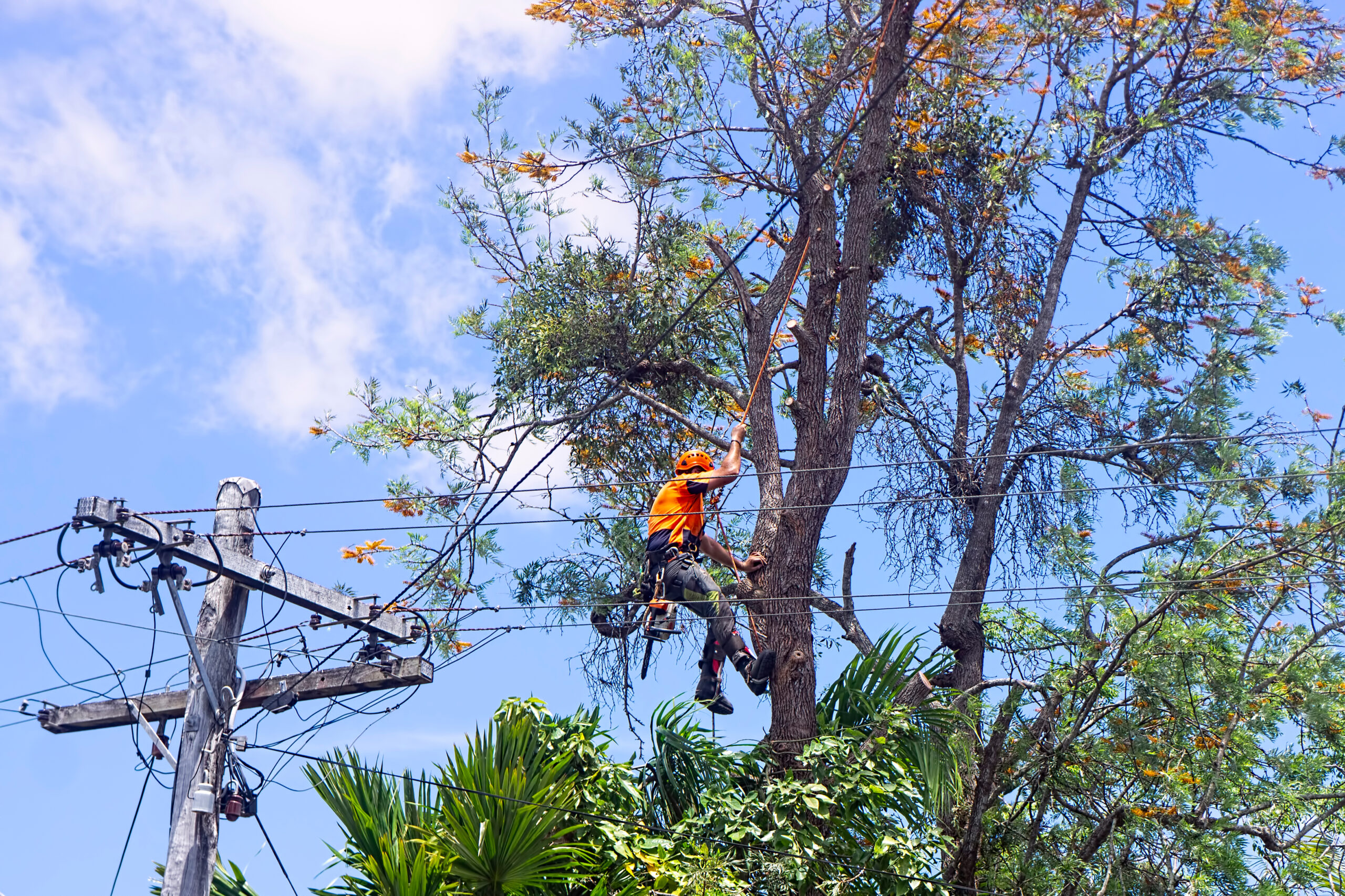
Arborists play a critical role in maintaining the safety and reliability of powerline and utility infrastructure. Their expertise ensures vegetation management efforts are effective, minimizing the risk of outages or accidents caused by overgrown trees or fallen branches.
However, the job comes with its share of challenges, particularly in the context of transmission and distribution (T&D) utilities. We explore the top four challenges arborists face and offer insights into potential solutions.
| Challenge | Concern | Strategy for success |
| Difficult terrain and accessibility | Powerlines often run through remote and challenging landscapes, including dense forests, wetlands and mountainous areas. These terrains can be difficult to access, making it hard for arborists to carry out inspections efficiently. | Using advanced technology like drones equipped with LiDAR and high-resolution cameras, arborists can access hard-to-reach areas and gather detailed data without requiring on-ground navigation through challenging terrain. |
| Weather conditions | Arborists frequently contend with unpredictable weather conditions, such as high winds, heavy rain or extreme temperatures. These conditions hinder inspection efforts, pose safety risks to workers, and reduce the effectiveness of equipment. | Utilizing weather-resistant equipment for remote inspections and predictive maintenance strategies powered by data analytics, can help identify the most vulnerable areas, enabling better planning and prioritization of inspections ahead of extreme weather events. |
| Safety hazards | Working near live powerlines is inherently dangerous. Arborists are exposed to significant electrical hazards and must maintain strict adherence to safety protocols. Additionally, tasks such as climbing trees or operating at elevated heights introduce risks of falls and physical strain. | Comprehensive safety training and the use of personal protective equipment (PPE) are essential, but remote inspection technologies, like unmanned aerial systems (UAS), can further reduce the need for physical proximity to high-risk areas. Furthermore, mapping assets in a living digital twin allows arborists and utilities to utilise predictive maintenance technologies, to avoid sending workers into the field unnecessarily. |
| Regulatory compliance and permitting | The Federal Energy Regulatory Commission (FERC) requires utilities to document their vegetation management programs and annually inspect high-voltage lines. While the responsibility typically falls on utilities, line clearance arborists must comply with the Electric Power Generation, Transmission and Distribution Standard (29 CFR Part 1910.269), follow the Electrical Safety Related Work Practices Standard (29 CFR Subpart S, 1910.331-335), adhere to ANSI A300 Part 1 standards for tree pruning, and understand on a state and municipal level what permits are required for tree work. And, with The North American Electric Reliability Corporation (NERC) auditing utility vegetation management plans, with potential for non-compliance, the stakes are high. | While the permitting and regulatory requirements of working at height, pruning trees and safety are complex, leveraging advanced software solutions, and employing drone inspections can help arborist to make the most out of the data that they collect. And, when coupled with AI that software can be used to predictively understand future vegetation growth – impacted by a number of factors, including weather changes that could increase or stunt growth of the thousands of vegetation species that could come into contact with T&D assets – taking the guess work out of planning inspections. maintaining compliance and operational excellence. |
Overcoming challenges with technology
Arborists play a crucial role in maintaining safe and efficient T&D utility networks, tackling complex challenges like rough terrains and strict safety standards.
Equipping arborists with advanced tools like drones, AI analytics, and comprehensive training empowers them to ensure reliable power delivery while protecting their well-being.
Read further Sharper Shape insights here

